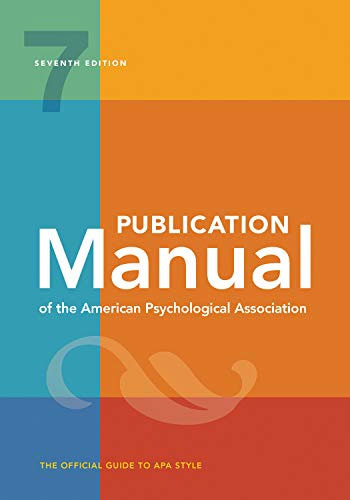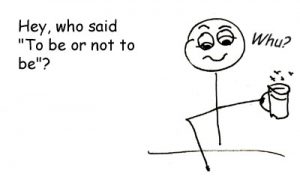
We’ve talked about how to cite references in APA, but how about when to cite?
If you’re not used to citing with APA, it can feel . . . kinda weird. Sure, you remember from English class that you’re supposed to cite your source whenever you quote something, or even specifically paraphrase a passage. You quote, “To be or not to be,” in your essay, and then you put in (Hamlet III i 64) to note that the phrase comes from Shakespeare, and there you go.
But that’s the style of the Modern Language Association (MLA), which is primarily concerned with who said what and where the reader can find it.
The American Psychological Association (APA), however, is concerned with who said what and when they said it. After all, the theories of science have history. APA wants to know when ideas originate and whose ideas have led to other people’s ideas.
Get a free sample proofread and edit for your document.
Two professional proofreaders will proofread and edit your document.
Consequently, it’s not enough for the APA only to mark where quotes come from with a date. It wants you to cite a source whenever you bring up an idea or a bit of data. Moreover, APA wants that citation when the idea or information is first used. (Sometimes, I find it helpful to think of APA as a sort of half-deaf, really paranoid great aunt, constantly asking, “Who told you that?”)
 For example, let’s say I’m going to talk about beer. I know that beer is the oldest type of alcohol people made on purpose and was part of ancient Egyptian culture. If I mentioned that in a paper in APA style, however, I am not sufficient as a source (i.e., I’m not a recognized expert on booze, though my liver would argue.), so I would need to cite such a statement:
For example, let’s say I’m going to talk about beer. I know that beer is the oldest type of alcohol people made on purpose and was part of ancient Egyptian culture. If I mentioned that in a paper in APA style, however, I am not sufficient as a source (i.e., I’m not a recognized expert on booze, though my liver would argue.), so I would need to cite such a statement:
The oldest purposefully man-made alcohol is beer (Standage, 2005).
But that’s not all. If I continue to talk about things I learned from Tom Standage’s The History of the World in 6 Glasses, I need to keep citing Standage to make it clear every single time that each new piece of information comes from his book, not from something I dreamt up after too many of said beers. Check it out:
The oldest alcohol purposefully man-made is beer (Standage, 2005). It was part of Ancient Egyptian culture and has been preserved from hieroglyphs and simple images on extant pottery from the period showing men drinking from a large pot of beer with straws (Standage, 2015). As with the domestication of cats, the creation of beer came from having large stores of grain, which were allowed to ferment, creating a “rudimentary form of beer” (Standage, 2015, p. 3). Beer was even part of the wages paid to laborers on the pyramids (Standage, 2015).
APA insists that you never leave it unclear just what is your opinion and what comes from someone else. If you didn’t think it up, cite it every single time.
Making It Less Clunky
Now, if you think that paragraph looks kind of clunky with “Standages” all over the place, you’re right. Thank goodness, we can do many things to incorporate the understanding that the information comes from Standage without constantly repeating his name. The sentence needs only to indicate that the same source is being used. Voila!
The oldest alcohol purposefully man-made is beer (Standage, 2005). The author explained it was part of Ancient Egyptian culture and has been preserved from hieroglyphs and simple images on extant pottery from the period showing men drinking from a large pot of beer with straws. As with the domestication of cats, the creation of beer came from having large stores of grain, which were allowed to ferment, creating a “rudimentary form of beer” (p. 3). He noted that beer was even part of the wages paid to laborers on the pyramids.
So the whole “cite everything” mantra doesn’t have to kill your writing. It just has to be clear enough to appease APA’s constant nagging, “And just where did you hear that, smarty-pants?”
Julia H.
Get a free sample proofread and edit for your document.
Two professional proofreaders will proofread and edit your document.
Get a free sample proofread and edit for your document.
Two professional proofreaders will proofread and edit your document.
We will get your free sample back in three to six hours!